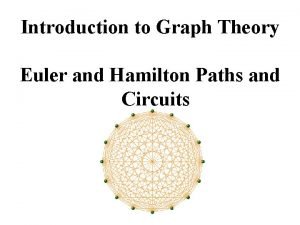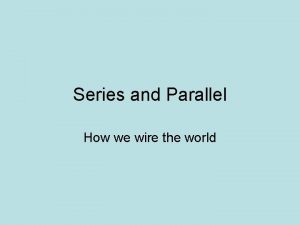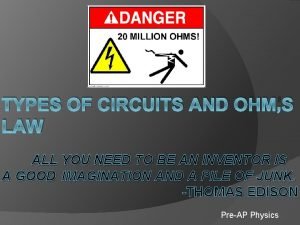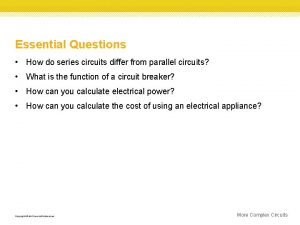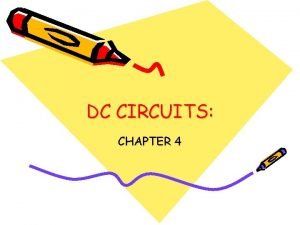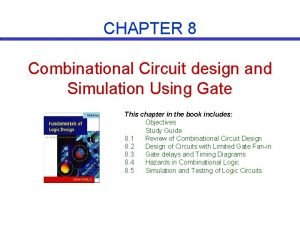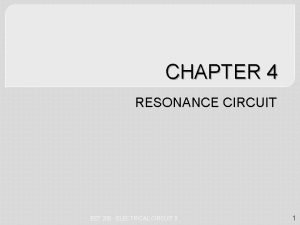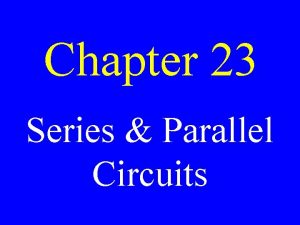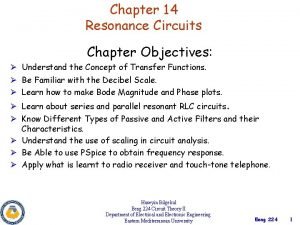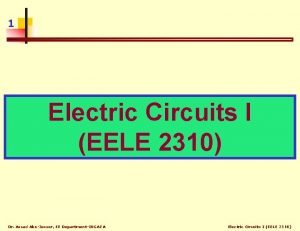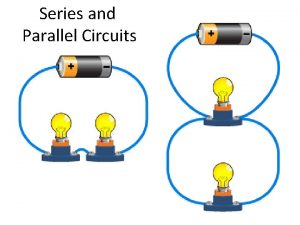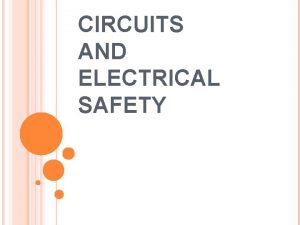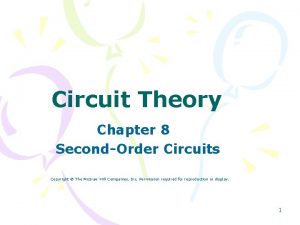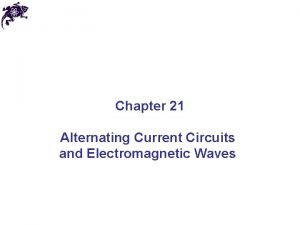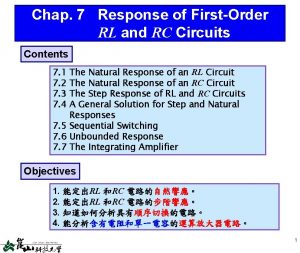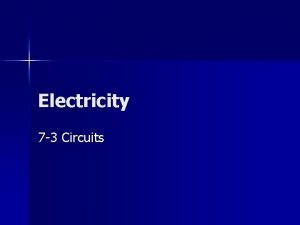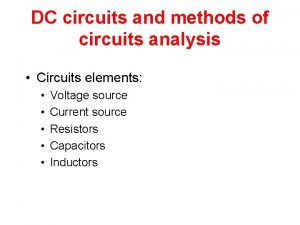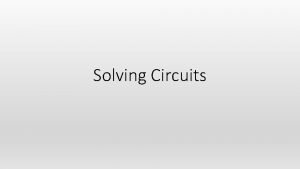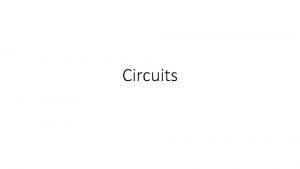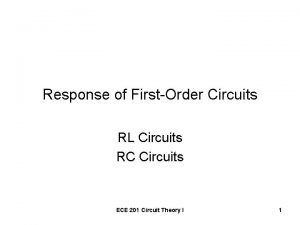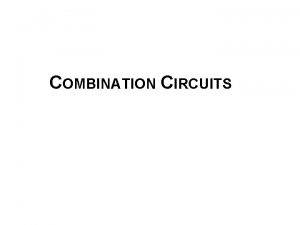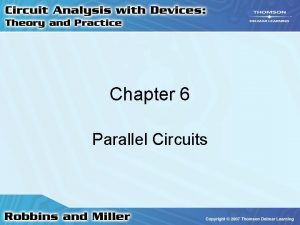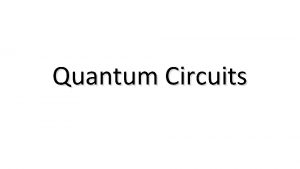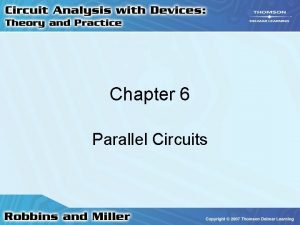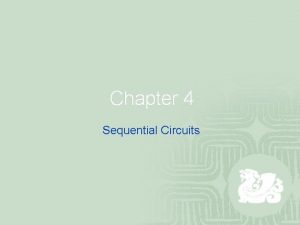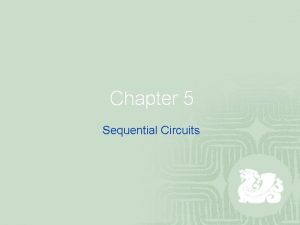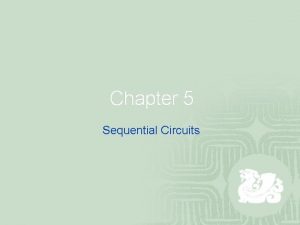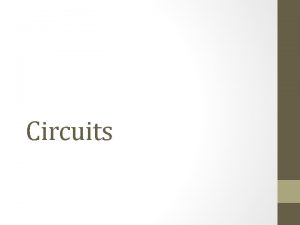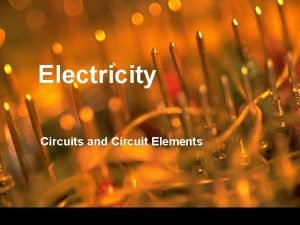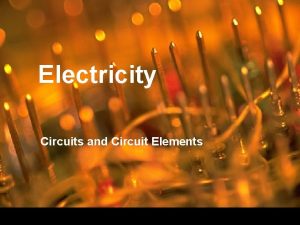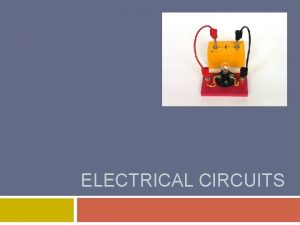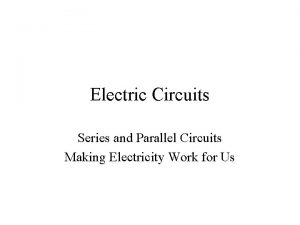Electricity and circuits What is electricity Electricity is


























- Slides: 26

Electricity and circuits

What is electricity? Electricity is the flow of electric charges, typically through wires, conductors, and electrical devices. Sometimes we can see the effects of electricity in nature.

What is electric current? Electric current is the flow of charged particles, usually through wires and circuits. Current is measured in amperes (A), also called amps. Animated illustration, page 472

How do we measure electric current? Electric current is measured using an ammeter or, more commonly, a digital multimeter. In order to properly measure current, all the current must flow into the meter and back out again, into the circuit being tested.

What is an electric circuit? An electric circuit is a conducting path through which electric current can flow. The symbol for electric current is I. In this circuit, I = 0. 3 amps.

Charge is conserved Electric current I must be the same at all points in a simple, single-loop circuit. I Charge can never be created or destroyed. All the charge that flows through one point in the circuit must flow through the next point also. I

Open and closed circuits An open circuit does not have a complete path so no current flows. A closed circuit has a complete path, allowing current to flow.

Common circuit elements

Knife blade switches A knife blade switch uses a mechanical lever to open/close a circuit connection. The handle is an insulator, so you won’t get a shock when you touch it! When attaching a knife blade switch to a circuit, do so with it in the open position.

What is a short circuit?

What is a breadboard? A circuit breadboard is a device used for mounting and prototyping electric circuits. Power and ground are connected from an external source to strips on the edge of the breadboard.

Exploring the ideas In Investigation 17 A you will build electric circuits using a circuit breadboard.

Investigation Part 1: Exploring the connections on a breadboard 1. Use the continuity setting on a multimeter to test whether the probes are connected to each other. 2. Identify 3 kinds of connections: power (red); ground (blue); and terminal (black). 3. Draw a diagram showing the connections between the holes in the breadboard.

Investigation Questions a. Where should you connect the positive and negative terminals of a battery? b. Where should you connect other circuit components, such as lamps and resistors? c. How are the holes in a circuit board connected to each other?

Investigation Draw a diagram showing the connections between the holes in the breadboard on your student assignment sheet.

Investigation Part 2: Wiring a simple circuit 1. Connect power and ground from a +3 V voltage source (or 2 D-cells) to the breadboard. One lead connects to the breadboard's power strip; the other to the ground strip. 1. Connect a simple circuit with one lamp.

Investigation Does your lamp illuminate? If not, check all your connections. The two ends of the lamp must be in different rows. You can use ANY rows. This example uses rows 9 and 10.

Create a simple switch How can you use wires to create a switch? Does your lamp go on and off as you connect/disconnect the switch?

Short circuit How can you use a wire to modify your circuit to create a short circuit?

Short circuit How can you use a wire to modify your circuit to create a short circuit? Hint: use a wire to bypass the lamp! What should happen to the lamp if you create the short circuit correctly?

Assessment 2. Label each of these electrical symbols with the name of the electrical component it represents: battery; resistor; lamp; switch; or wire.

Assessment 2. Label each of these electrical symbols with the name of the electrical component it represents: battery; resistor; lamp; switch; or wire switch battery lamp resistor

Assessment 4. Identify the following circuits:

Assessment 4. Identify the following circuits: Short circuit Open circuit Closed circuit

Going further How to strip the plastic insulation off the ends of a wire A small amount of plastic insulation must be removed from the ends of wires to use them in circuits. If your wires are not “pre-stripped, ” then you will need to use a wire stripper to remove a small amount of the insulation.

 Advantages of parallel circuits over series circuits
Advantages of parallel circuits over series circuits Static electricity and current electricity
Static electricity and current electricity Current electricity gif
Current electricity gif Electricity and magnetism vocabulary
Electricity and magnetism vocabulary Euler circuit
Euler circuit Euler graph
Euler graph Pros and cons of series and parallel circuits
Pros and cons of series and parallel circuits Datagram switching vs virtual circuit
Datagram switching vs virtual circuit Types of circuits and ohm's law answer key
Types of circuits and ohm's law answer key Incomplete electrical circuit
Incomplete electrical circuit Difference between series and parallel circuit
Difference between series and parallel circuit How do series and parallel circuits differ
How do series and parallel circuits differ Capacitors and inductors in dc circuits
Capacitors and inductors in dc circuits Combinational circuit design and simulation using gates
Combinational circuit design and simulation using gates Series and parallel circuits
Series and parallel circuits Worksheet circuits and ohm's law answer key
Worksheet circuits and ohm's law answer key Chapter 23 series and parallel circuits answers
Chapter 23 series and parallel circuits answers Parallel resonance
Parallel resonance Lesson 8: comparing series and parallel rlc circuits
Lesson 8: comparing series and parallel rlc circuits Facts about parallel circuits
Facts about parallel circuits Electric circuits nilsson
Electric circuits nilsson Bill nye series and parallel circuits
Bill nye series and parallel circuits Venn diagram of reflection and refraction
Venn diagram of reflection and refraction Every circuit must have
Every circuit must have V r and i in parallel circuits ch.8:1 answer key
V r and i in parallel circuits ch.8:1 answer key Alternating current circuits and electromagnetic waves
Alternating current circuits and electromagnetic waves Rl step response
Rl step response





